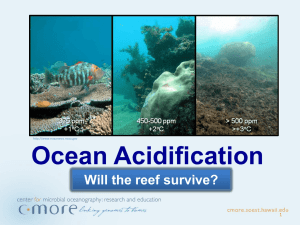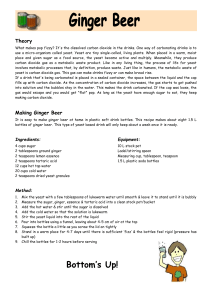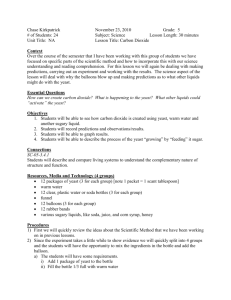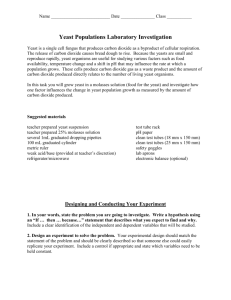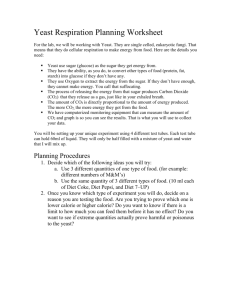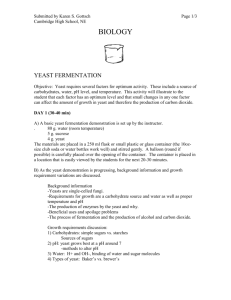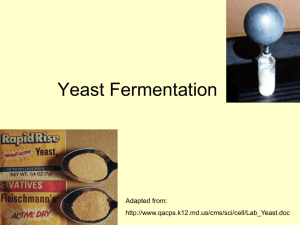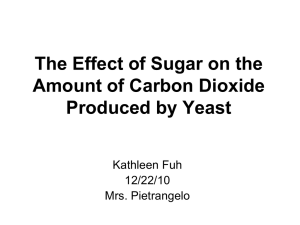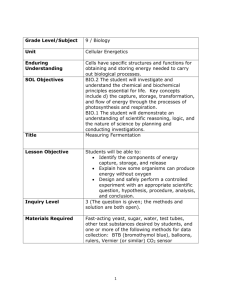CAPT - Yeast Lab
advertisement
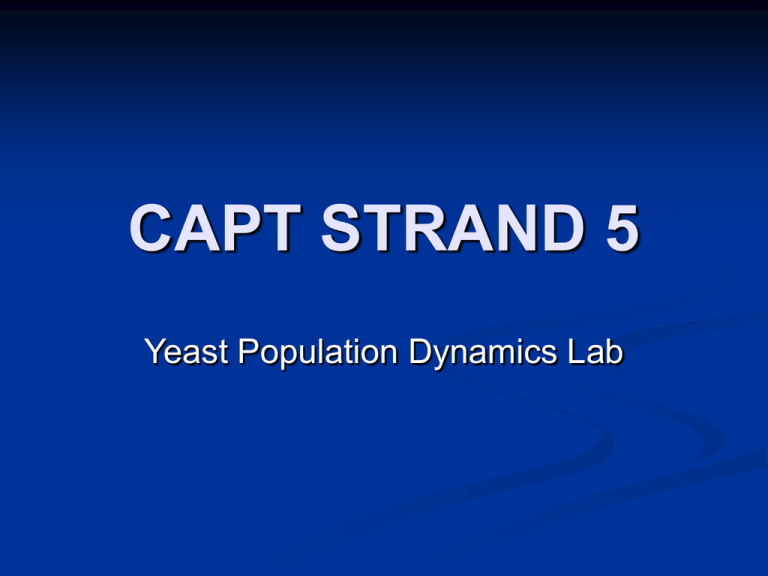
CAPT STRAND 5 Yeast Population Dynamics Lab Overview Living organisms have the capability to produce populations of unlimited size, but the environment can support only a limited number of individuals from each species. Background info Yeast is a fungus that produces carbon dioxide as a waste product of cell respiration. The quantity of waste product is directly related to the size of the yeast population. Objective You will be able to identify the relationship between a change in the environmental conditions and yeast population. Possible variables: Changes in pH, light, temperature and concentrations of food supply Your Task Grow yeast in a sugar solution ( food for the yeast) and investigate how one factor influences the change in yeast population growth as measured by the amount of carbon dioxide produced. Materials teacher prepared yeast suspension teacher prepared sugar solution several 1 ml graduated dropping pipettes 100 ml graduated cylinder weak acid/base (provided at teacherÕs discretion) electronic balance (optional) refrigerator/microwave syringe collection bottle rubber stopper lubrication grease Thermometer safety goggles General procedure for growing yeast 1. Place 35 ml of the 30 % sugar solution into the collection bottle. 2. Place 1 ml of the yeast suspension into the same collection bottle 3. Insert plunger into syringe 4. Place rubber stopper onto the syringe 5. Connect the entire apparatus to the collection bottle. 6. Record starting volume on your data sheet 7.Incubate samples for 24 hours and record increase in carbon dioxide volume . 8. Record data after 48 hours as well. Possible data tables Carbon Dioxide Release 60 50 mL 40 Series1 Series2 Series3 30 20 10 0 1 2 Days 3 You now have a procedure for growing yeast and measuring the amount of carbon dioxide produced as a waste product. Can you identify a variable you can change which would also change the amount of carbon dioxide produced? Can you identify the independent and dependent variables? The increase in the carbon dioxide volume was Dependent on what variable? Possible answers: pH,Temp. amount of food….. These represent Independent variables The next step Design your lab The design should match the problem Include a control Identify your variables Review your design with your teacher Follow all safety instructions Begin your lab Items to remember State the problem Form a hypothesis Describe your experiment Organize your data I.D. independent and dependent variables Support your conclusions Discuss validity End

